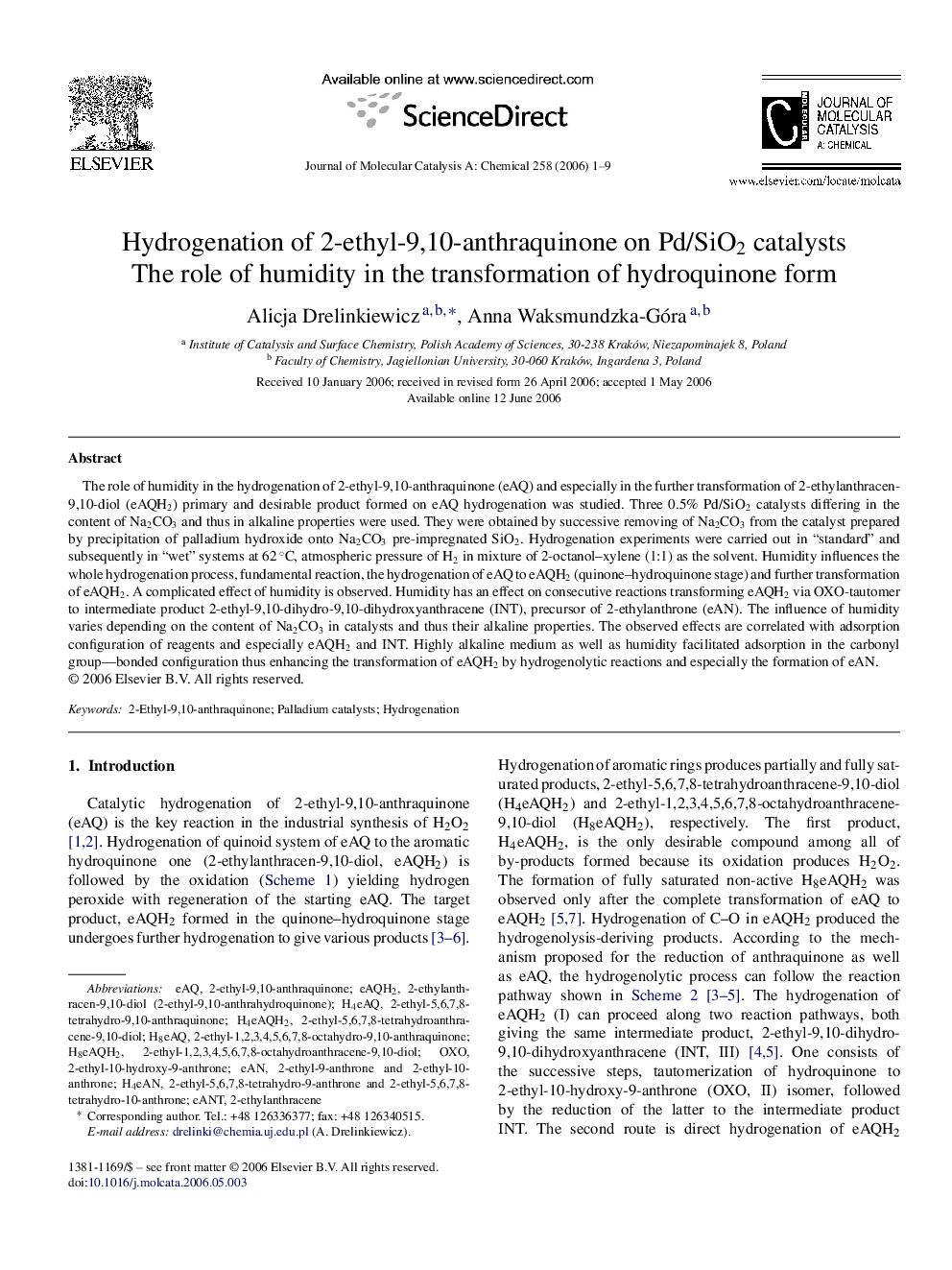| Article ID | Journal | Published Year | Pages | File Type |
|---|---|---|---|---|
| 68858 | Journal of Molecular Catalysis A: Chemical | 2006 | 9 Pages |
The role of humidity in the hydrogenation of 2-ethyl-9,10-anthraquinone (eAQ) and especially in the further transformation of 2-ethylanthracen-9,10-diol (eAQH2) primary and desirable product formed on eAQ hydrogenation was studied. Three 0.5% Pd/SiO2 catalysts differing in the content of Na2CO3 and thus in alkaline properties were used. They were obtained by successive removing of Na2CO3 from the catalyst prepared by precipitation of palladium hydroxide onto Na2CO3 pre-impregnated SiO2. Hydrogenation experiments were carried out in “standard” and subsequently in “wet” systems at 62 °C, atmospheric pressure of H2 in mixture of 2-octanol–xylene (1:1) as the solvent. Humidity influences the whole hydrogenation process, fundamental reaction, the hydrogenation of eAQ to eAQH2 (quinone–hydroquinone stage) and further transformation of eAQH2. A complicated effect of humidity is observed. Humidity has an effect on consecutive reactions transforming eAQH2 via OXO-tautomer to intermediate product 2-ethyl-9,10-dihydro-9,10-dihydroxyanthracene (INT), precursor of 2-ethylanthrone (eAN). The influence of humidity varies depending on the content of Na2CO3 in catalysts and thus their alkaline properties. The observed effects are correlated with adsorption configuration of reagents and especially eAQH2 and INT. Highly alkaline medium as well as humidity facilitated adsorption in the carbonyl group—bonded configuration thus enhancing the transformation of eAQH2 by hydrogenolytic reactions and especially the formation of eAN.
Graphical abstractThe influence of humidity on the hydrogenation of 2-ethyl-9,10-anthraquinone (eAQ) was studied over 0.5% Pd/SiO2 catalysts of various Na2CO3 content and thus various alkalinity. Studies are concentrated on the role of water in transformation of eAQH2, primary and desirable product which is formed in hydrogenation of eAQ. eAQH2 can be hydrogenated directly to intermediate product INT or can be tautomerized to OXO isomer with subsequent hydrogenation to INT, the precursor of 2-ethylanthrone (eAN). Humidity facilitates adsorption of reagents in the carbonyl group-bonded configuration thus enhancing the consumption of eAQH2 by hydrogenolytic reactions and the formation of eAN. Figure optionsDownload full-size imageDownload as PowerPoint slide
